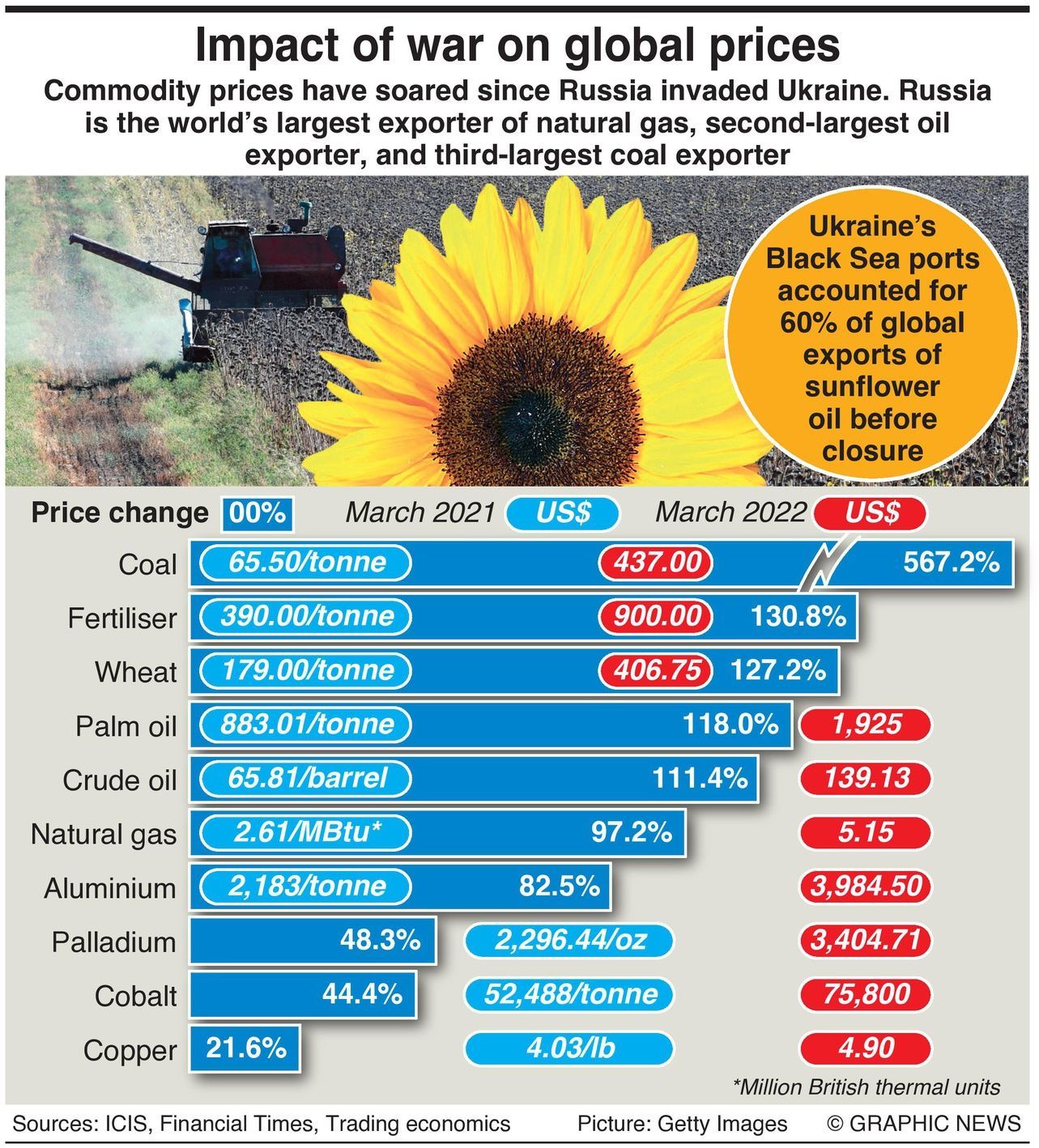
Oil prices spiked to their highest levels since 2008 on Monday (March 7, 2022) after Antony Blinken, U.S. Secretary of State, said Washington was in "very active discussions" with European allies over an oil ban in the wake of Russia's invasion of Ukraine. Benchmark Brent crude reached $139.13 a barrel, and U.S. West Texas Intermediate (WTI) hit $130.50, both striking their highest since July 2008. Russia pumps 11 million barrels per day of crude after Saudi Arabia.
The global effects of Russia's invasion of Ukraine are not confined just to oil. Benchmark Newcastle coal futures also hit a record $430 per tonne, up from $89 in March 2021. Only Australia and Indonesia export more coal than Russia. Russia and Ukraine are major wheat suppliers, accounting for 29% of global exports. European milling wheat in Paris has set a record of €406.75 per tonne, up from €179 a year ago.
Ukraine and Russia are also the top two exporters of sunflower oil, at 6.65 million tonnes and 3.8 million tonnes respectively, in 2021-22, according to the U.S. Department of Agriculture. Ukraine's Black Sea ports account for 60% of global exports of sunflower oil. Replacing Ukraine's sunflower oil with palm oil from Malaysia has led to record prices of $1,925 per tonne, 118 percent higher than the same time last year. Russia and its ally Belarus are the world's second and third largest producers of muriate of potash (MOP) fertilizer. Prices have surged 130.8 percent since March 2021 to $900 per tonne.





